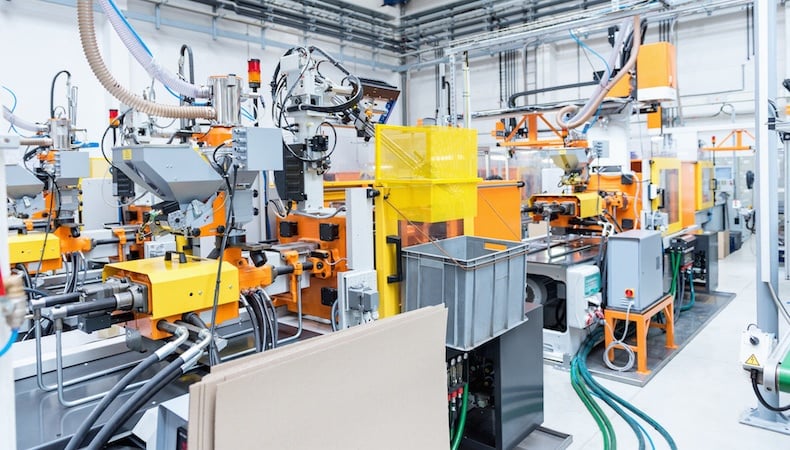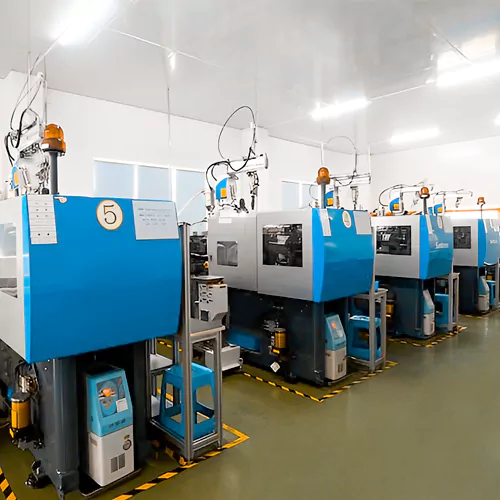How Plastic Injection Molding Drives Performance in Automation
How Plastic Injection Molding Drives Performance in Automation
Blog Article
Understanding the Basics of Plastic Shot Molding Procedures
Plastic shot molding offers as a cornerstone of modern-day manufacturing, providing a methodical strategy to generating intricate components with precision. Discovering these important aspects could disclose how even minor changes can lead to substantial renovations in manufacturing outcomes, increasing inquiries concerning the possibility for innovation in this established procedure.
What Is Plastic Injection Molding?
Plastic injection molding is a commonly utilized manufacturing procedure that transforms thermoplastic and thermosetting products right into precise and intricate forms. This strategy is preferred for its ability to create high quantities of the same parts with remarkable accuracy, making it an essential approach in numerous markets, consisting of vehicle, durable goods, and medical gadgets.
The procedure entails melting the picked plastic material and injecting it into a mold and mildew under high stress. The mold and mildew, designed to the specifications of the desired part, enables the liquified plastic to form as it strengthens and cools. When the material has hardened, the mold and mildew is opened, and the completed element is expelled.
Plastic injection molding supplies several benefits, including lowered waste, consistency in production, and the ability to include intricate layouts that may be testing with various other making techniques. In addition, it supports a wide variety of materials, each offering distinct buildings that can be tailored for details applications. As markets continue to innovate, plastic shot molding continues to be at the center, allowing the advancement of sophisticated items that meet advancing customer demands.
The Injection Molding Process
The injection molding process is a sophisticated method that includes a number of essential phases to generate high-grade plastic elements. Plastic pellets are fed into a heated barrel where they are melted right into a viscous liquid. This molten plastic is then infused under high stress into a precision-engineered mold, which shapes the product right into the preferred type.
As soon as the mold is loaded, the plastic is permitted to cool down and strengthen, taking the shape of the mold tooth cavity. Air conditioning time is vital, as it affects the cycle time and the final residential properties of the shaped component. After adequate cooling, the mold opens up, and the ended up part is ejected utilizing ejector pins.

Materials Used in Shot Molding
Numerous materials can be used in the shot molding process, each offering special properties that satisfy specific applications. The most frequently used products include thermoplastics, thermosetting plastics, and elastomers.

Thermosetting plastics, like epoxy and phenolic resins, go through a chemical change during the curing process, causing a stiff, stringent structure. These products useful link are perfect for applications needing high warm resistance and architectural stability, usually utilized in electric insulators and automobile parts.
Elastomers, consisting of silicone and rubber-based materials, supply flexibility and resilience. Their unique residential properties make them ideal for applications that demand flexibility, such as seals and gaskets.
Furthermore, specialized materials like bio-based plastics and compounds are acquiring traction for their environmental advantages and boosted efficiency attributes, expanding the extent of shot molding applications in different markets. Recognizing the residential properties of these products is crucial for selecting the appropriate kind for details jobs.
Advantages of Injection Molding
Shot molding attracts attention as an extremely effective manufacturing procedure that supplies many advantages for creating complex parts with precision. Among one of the most considerable benefits is the ability to create detailed designs that would certainly be impossible or difficult to accomplish with various other techniques (Plastic Injection Molding). The procedure enables thorough functions and limited tolerances, ensuring premium components
Additionally, shot molding is known for its rapid production abilities, making it a perfect option for high-volume manufacturing. Once the mold is produced, parts can be created swiftly, reducing lead times and increasing total performance. This effectiveness not just lowers production prices but also gives an one-upmanship in the marketplace.
The flexibility of products utilized in shot molding better enhances its appeal. A large range of thermoplastics and thermosetting polymers can be used, allowing makers to pick products that finest fulfill their details needs, including flexibility, heat, and strength resistance.
Furthermore, the process lessens waste, as excess material can frequently be recycled and recycled. This sustainability aspect adds to a reduced ecological effect, making injection molding a liable production option. In general, the benefits of shot molding make it a preferred method for numerous sectors.
Elements Impacting Item Quality
While countless factors can affect product quality in shot molding, recognizing these components is important for accomplishing optimum results. Key aspects include material selection, refining specifications, and mold and mildew layout.
Material option plays an essential function, as various polymers display distinct homes that affect flowability, toughness, and thermal stability. Inadequate material option can result in flaws such as warping or incomplete filling.
Handling parameters, consisting of temperature, cycle, and pressure time, should be meticulously controlled. Variations in these setups can cause disparities in part measurements and surface area finish. For example, exceedingly high temperatures might trigger deterioration of the polymer, while inadequate pressure can result in brief shots.
Mold and mildew design is just as crucial, as it determines the circulation of the molten plastic and the cooling process. Poorly developed redirected here molds might cause uneven cooling rates, resulting in residual anxieties and dimensional inaccuracies.

Verdict
To conclude, plastic shot molding works as an important production process that makes it possible for the effective manufacturing of high-quality elements. Mastery of the injection molding process, including the understanding of materials and the impact of numerous aspects on product top quality, is necessary for achieving optimum outcomes. The benefits of this technique, such as cost-effectiveness and layout flexibility, further highlight its importance across numerous industries, strengthening its condition as a preferred choice for high-volume production.
Plastic injection molding serves as a foundation of modern manufacturing, offering a methodical method to creating intricate components with accuracy.Plastic shot molding provides several advantages, consisting of reduced waste, consistency in manufacturing, and the capability to include intricate layouts that may be testing with other making approaches (Plastic Injection Molding). As sectors proceed to introduce, plastic shot molding continues to be at the center, making it possible for the advancement of innovative items that satisfy advancing customer demands
The injection molding procedure is a sophisticated technique that involves several vital phases to produce high-grade plastic parts.In verdict, plastic injection molding serves as an essential manufacturing procedure that allows the reliable production of top quality components.
Report this page